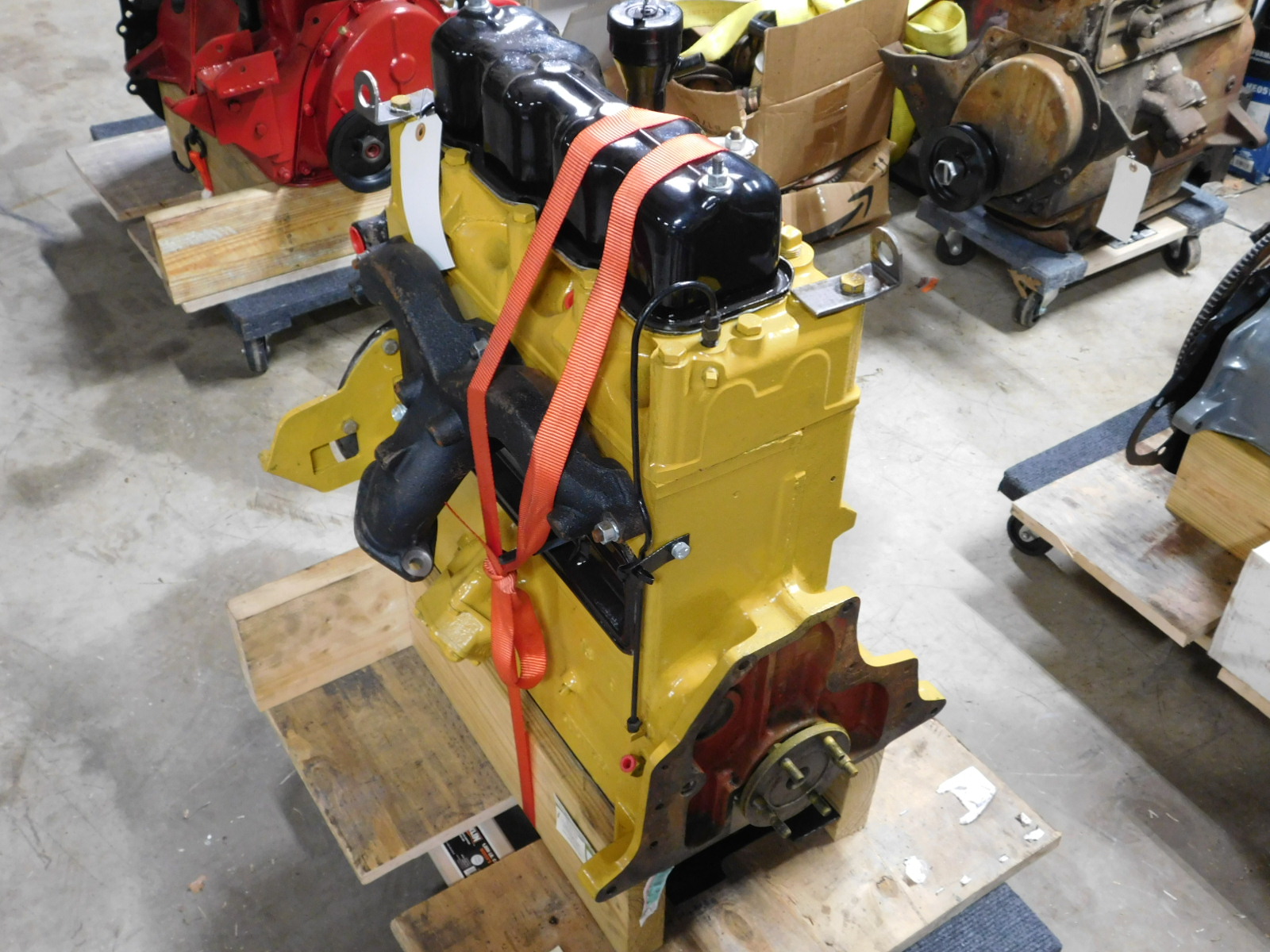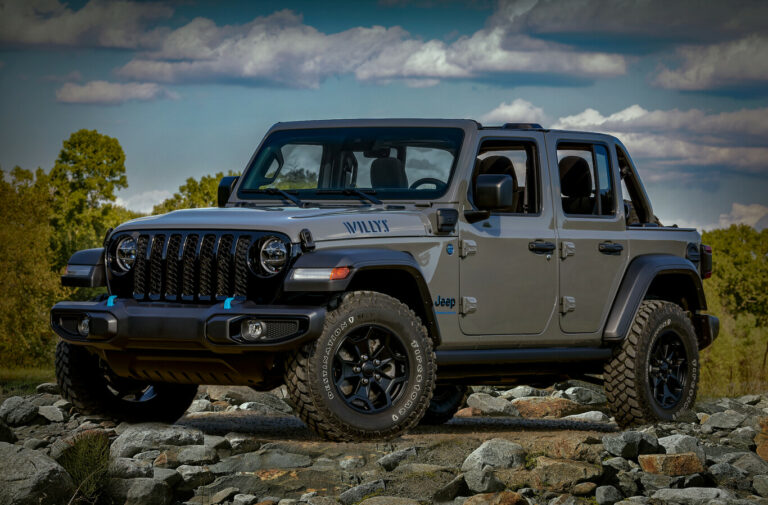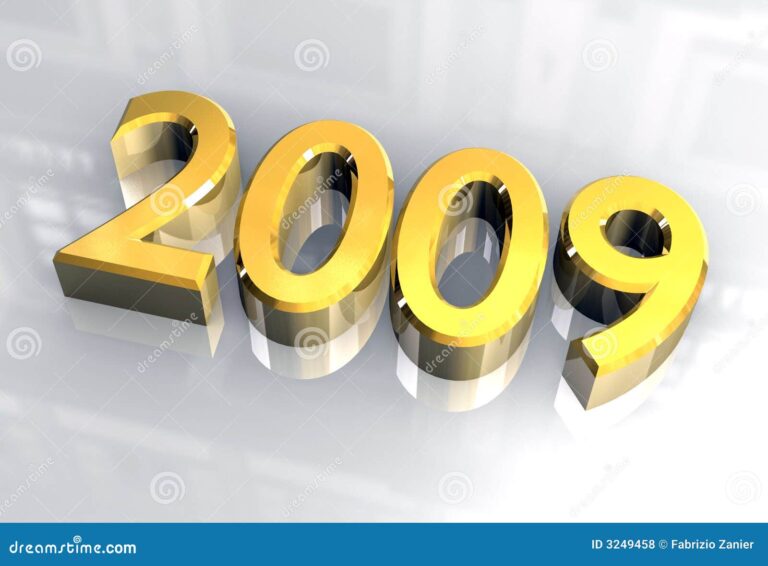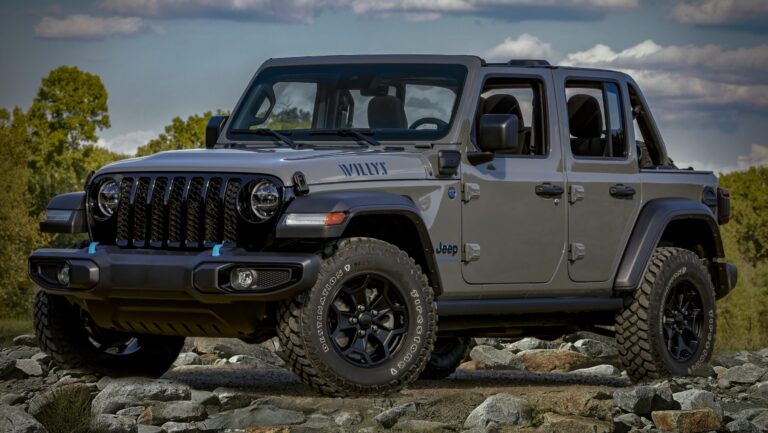Used 4.7 Jeep Engine For Sale: Your Comprehensive Guide to Revitalizing Your Ride
Used 4.7 Jeep Engine For Sale: Your Comprehensive Guide to Revitalizing Your Ride jeeps.truckstrend.com
The unmistakable roar of a V8 engine powering a Jeep is a symphony to many automotive enthusiasts. Among the most popular and enduring of these powertrains is the 4.7-liter PowerTech V8. Found primarily in the Grand Cherokee (WJ and WK generations) and the Commander (XK), this engine provided a significant boost in power and torque over its 4.0L inline-six sibling, making it a favorite for those who demanded more from their SUVs.
However, like all mechanical components, even the robust 4.7L can eventually succumb to wear and tear, age, or unforeseen issues. When faced with a failing engine, the prospect of a costly repair or a brand-new replacement can be daunting. This is where the market for a Used 4.7 Jeep Engine For Sale becomes not just relevant, but essential. Opting for a used engine offers a cost-effective, readily available, and environmentally friendly solution to keep your beloved Jeep on the road, breathing new life into a vehicle that still has plenty of adventures left to offer. This comprehensive guide will navigate you through everything you need to know about purchasing and installing a used 4.7L Jeep engine, ensuring you make an informed decision.
Used 4.7 Jeep Engine For Sale: Your Comprehensive Guide to Revitalizing Your Ride
Understanding the 4.7L PowerTech Engine
Before diving into the buying process, it’s crucial to understand the engine itself. The 4.7-liter PowerTech V8 was introduced in 1999, replacing the aging 5.2L and 5.9L Magnum V8s in the Grand Cherokee line. It’s a single overhead camshaft (SOHC) engine with two valves per cylinder, known for its smooth operation and respectable power output.
Key Characteristics:
- Displacement: 4.7 Liters (287 cubic inches)
- Configuration: V8, SOHC
- Horsepower (Non-HO): Approximately 235 HP (1999-2004), 230 HP (2005-2007)
- Torque (Non-HO): Approximately 295 lb-ft (1999-2004), 300 lb-ft (2005-2007)
- High Output (HO) Version: Introduced in 2002, the HO version featured revised cylinder heads, intake manifold, camshafts, and a higher compression ratio, boosting power to around 265-270 HP and 325-330 lb-ft of torque. This is a significant distinction when considering a used engine, as the HO requires a compatible ECU.
- Applications:
- Jeep Grand Cherokee (WJ: 1999-2004, WK: 2005-2007)
- Jeep Commander (XK: 2006-2007)


While generally reliable, the 4.7L engine does have some well-documented quirks, such as potential issues with valve seat drop (more common in early models), noisy lifters, and oil pressure concerns, particularly with improper oil viscosity or maintenance. Awareness of these common issues can help you assess a used engine.
Why Choose a Used 4.7L Jeep Engine?
The decision to buy a used engine isn’t just about saving money; it’s a practical choice with several benefits:

- Cost Savings: This is often the primary motivator. A used engine can be a fraction of the cost of a new crate engine or a professionally rebuilt unit, making it an economically viable option for extending your vehicle’s life.
- Availability: The 4.7L PowerTech V8 was widely produced for nearly a decade across popular Jeep models. This means there’s a relatively robust supply of used engines available from salvage yards, parts dealers, and private sellers.
- Restoration & Repair: For enthusiasts or owners who love their specific Jeep model, replacing the engine allows them to keep a cherished vehicle on the road without the expense of a new car.
- Project Builds & Swaps: A used 4.7L can be an excellent foundation for custom builds, engine swaps into other vehicles, or as a spare for those who frequently push their Jeeps to the limits.
- Environmental Impact: Opting for a used engine contributes to recycling automotive parts, reducing waste, and lessening the demand for new manufacturing.
Where to Find a Used 4.7L Jeep Engine For Sale
The market for used auto parts is diverse. Here are the most common avenues to explore:
- Auto Salvage Yards (Junkyards): Often the first stop. These yards typically have a wide inventory of vehicles from which engines are pulled. You might find engines still in the donor vehicle, allowing for some inspection, or already pulled and stored.
- Online Marketplaces: Websites like eBay, Craigslist, and Facebook Marketplace are brimming with individual sellers and small businesses offering used engines. Be cautious and verify seller reputation.
- Specialized Used Parts Dealers: Many businesses focus solely on selling used engines, transmissions, and other major components. They often offer more rigorous testing, cleaning, and even limited warranties, albeit at a slightly higher price point.
- Jeep Forums & Enthusiast Groups: Online communities for Jeep owners can be excellent resources. Members often sell parts, and you can get recommendations for reputable sellers.
- Local Mechanics/Repair Shops: Some shops might have relationships with suppliers or even have a good used engine on hand from a previous job or a vehicle they’ve parted out.
What to Look for When Buying a Used 4.7L Jeep Engine
Purchasing a used engine inherently carries a degree of risk. Diligent inspection and thorough questioning are paramount to mitigating potential issues.
-
Mileage and Donor Vehicle Information:
- Mileage: Lower mileage is generally preferred, but not the sole indicator of health. Ask for the exact mileage of the donor vehicle.
- Donor Vehicle History: Inquire why the vehicle was salvaged (e.g., accident, flood, transmission failure). An engine from a rear-end collision is often preferable to one from a front-end impact or a flood vehicle. Ask for the VIN of the donor vehicle if possible, to cross-reference its history.
-
Visual Inspection (Crucial):
- Oil Leaks: Look for excessive oil grime or fresh leaks around valve covers, oil pan, front/rear main seals, and the oil filter housing. Some minor weeping is normal on older engines, but active leaks are a red flag.
- Coolant Leaks: Check for signs of coolant (often pink, green, or orange residue) around the water pump, thermostat housing, radiator hose connections, and the cylinder head mating surfaces.
- Cracks: Inspect the engine block and cylinder heads thoroughly for any visible cracks, especially around mounting points or exhaust manifolds.
- Overall Cleanliness: While a perfectly clean engine might be suspicious (steam-cleaned to hide leaks), excessive sludge and grime can indicate poor maintenance.
- Damaged Components: Check for broken sensors, snapped bolts, damaged wiring harnesses, or bent pulleys.
-
Internal Inspection (Limited but Important):
- Oil Condition: If possible, check the oil dipstick. Look for milky white fluid (indicates coolant in oil) or excessive metallic flakes. Dark oil is normal, but sludge is not.
- Spark Plugs: If accessible, pull a spark plug or two. Their condition can reveal much about combustion. Black, sooty plugs indicate rich running; white, chalky plugs can indicate lean conditions or coolant burning.
- Crankshaft Rotation: If the engine is out of the vehicle and accessible, try to rotate the crankshaft by hand using a wrench on the crank pulley bolt. It should turn smoothly with consistent resistance (compression). Any binding, grinding, or severe inconsistency is a major red flag.
- Oil Pan: If buying from a salvage yard, sometimes you can get a look inside the oil pan (if it’s removed) for metal shavings or excessive sludge.
-
Testing & Documentation:
- Compression Test/Leak-Down Test: Reputable sellers, especially specialized engine dealers, may provide compression or leak-down test results. These are excellent indicators of internal engine health.
- Running Video: If the engine was pulled from a running vehicle, ask for a video of it running before removal.
- Warranty: Ask about a warranty. Many used engine sellers offer a limited warranty (e.g., 30-90 days), covering basic functionality. Understand its terms and what it covers (or doesn’t).
- Documentation: Ensure you get a bill of sale and, if possible, documentation linking the engine to its donor vehicle, especially if you’re concerned about theft or state regulations.
Tips for a Successful Purchase and Installation
- Do Your Research: Understand the common issues of the 4.7L engine and know what to look for specifically.
- Ask Plenty of Questions: Don’t be shy. A reputable seller will be transparent and willing to answer your queries.
- Get it in Writing: If a warranty or specific conditions are promised, ensure they are written into the sales agreement.
- Factor in Shipping Costs: Engines are heavy. Shipping can add significant cost, so get a quote upfront.
- Professional Installation: Unless you are an experienced mechanic with the right tools, professional installation is highly recommended. Engine swaps are complex.
- Replace Key Components: Even if the used engine seems good, it’s wise to replace critical wear items before installation:
- Water pump
- Thermostat
- Spark plugs
- All fluids (oil, coolant)
- Oil filter
- Front and rear main seals (if accessible and affordable)
- Valve cover gaskets
- Exhaust manifold gaskets
- Check and potentially replace timing chain guides/tensioners if mileage is high (though this is a more involved job).
- Pre-Installation Clean-up: Thoroughly clean the engine and engine bay before installation.
Potential Challenges and Solutions
- Undisclosed Issues: The biggest challenge. Mitigate by thorough inspection, asking questions, and seeking a warranty.
- Shipping Damage: Ensure the engine is crated securely and shipping is insured. Inspect immediately upon arrival.
- Compatibility Issues (HO vs. Non-HO): Verify your vehicle’s original engine type. Swapping an HO into a non-HO vehicle (or vice-versa) requires an ECU swap and potentially wiring modifications. Ensure the engine you buy matches your vehicle’s original specifications unless you plan for a conversion.
- Installation Complexity: If you’re not confident, hire a certified mechanic. They have the tools and expertise.
- Noisy Lifters/Oil Pressure: These are common 4.7L quirks. Often, proper oil (e.g., 5W-30 or 10W-30, depending on climate and engine generation) and a good oil filter (like a Mopar or Wix) can help. If severe, it may require deeper inspection.
Estimated Used 4.7 Jeep Engine Price Table
Prices for used engines vary widely based on condition, mileage, seller, location, and whether it’s an HO or non-HO version. The table below provides general estimates.
| Condition Category | Estimated Mileage Range | Estimated Price Range (USD) | Key Considerations |
|---|---|---|---|
| Low Mileage / Tested | 50,000 – 100,000 miles | $1,200 – $2,500+ | From reputable dealers, often with compression tests, cleaning, and a limited warranty (e.g., 90 days). Best peace of mind. |
| Mid-Range / Running Pull | 100,000 – 150,000 miles | $700 – $1,500 | Pulled from a vehicle confirmed to be running before salvage. Visual inspection and seller reputation are key. Limited or no warranty. |
| High Mileage / As-Is | 150,000 – 250,000+ miles | $300 – $800 | Cheapest option, often from private sellers or smaller yards. Higher risk of internal wear. Best for rebuild projects or experienced mechanics. |
| HO (High Output) Premium | N/A | Add $100 – $500 | HO versions typically command a slightly higher price due to increased performance and relative rarity. |
Note: These prices are estimates and can fluctuate significantly. Always get a specific quote and understand what’s included (e.g., accessories like alternator, power steering pump).
Frequently Asked Questions (FAQ) about Used 4.7 Jeep Engines
Q1: What’s the main difference between the 4.7L HO and non-HO engines?
A1: The HO (High Output) version features revised cylinder heads, camshafts, intake manifold, and a higher compression ratio, resulting in significantly more horsepower and torque (around 265-270 HP vs. 230-235 HP). It also requires a different Engine Control Unit (ECU).
Q2: How much does a used 4.7L engine typically cost?
A2: As per the table above, prices range from $300 for a high-mileage, as-is unit to over $2,500 for a low-mileage, tested engine from a reputable dealer.
Q3: Are there any common problems with the 4.7L engine I should be aware of?
A3: Yes, common issues include noisy lifters (often due to incorrect oil viscosity or lack of maintenance), oil pressure problems (sometimes related to sludge or oil pump issues), and less commonly, valve seat drop (more prevalent in early 1999-2001 models). Regular oil changes with the correct oil are crucial for this engine’s longevity.
Q4: Can I swap a 4.7L HO into a vehicle that originally had a non-HO 4.7L?
A4: Yes, it’s mechanically possible as the block is the same. However, you will need to swap the ECU/PCM to match the HO engine’s fuel and ignition maps. Some wiring differences might also need to be addressed. It’s a more involved swap than replacing with a like-for-like engine.
Q5: What parts should I definitely replace when installing a used engine?
A5: It’s highly recommended to replace the water pump, thermostat, spark plugs, all fluids (oil, coolant), and the oil filter. Consider replacing valve cover gaskets, exhaust manifold gaskets, and checking the front and rear main seals. These are relatively inexpensive parts that are much easier to replace while the engine is out.
Q6: How can I tell if a used engine is good before buying it?
A6: Conduct a thorough visual inspection for leaks, cracks, and damage. Ask about the donor vehicle’s history and mileage. If possible, attempt to rotate the crankshaft by hand. Request compression test results or a video of the engine running if it was pulled from a working vehicle. Always prioritize sellers who offer a warranty.
Conclusion
The market for a Used 4.7 Jeep Engine For Sale presents a fantastic opportunity to extend the life of your Jeep Grand Cherokee or Commander without breaking the bank. While purchasing a used engine always involves a degree of risk, by understanding the 4.7L PowerTech engine’s characteristics, knowing where to source one, performing meticulous inspections, and asking the right questions, you can significantly increase your chances of a successful and satisfying purchase. With careful selection and proper installation, your beloved Jeep can be back on the road, ready for many more miles of adventure, proving that sometimes, the best solution is a second chance.






